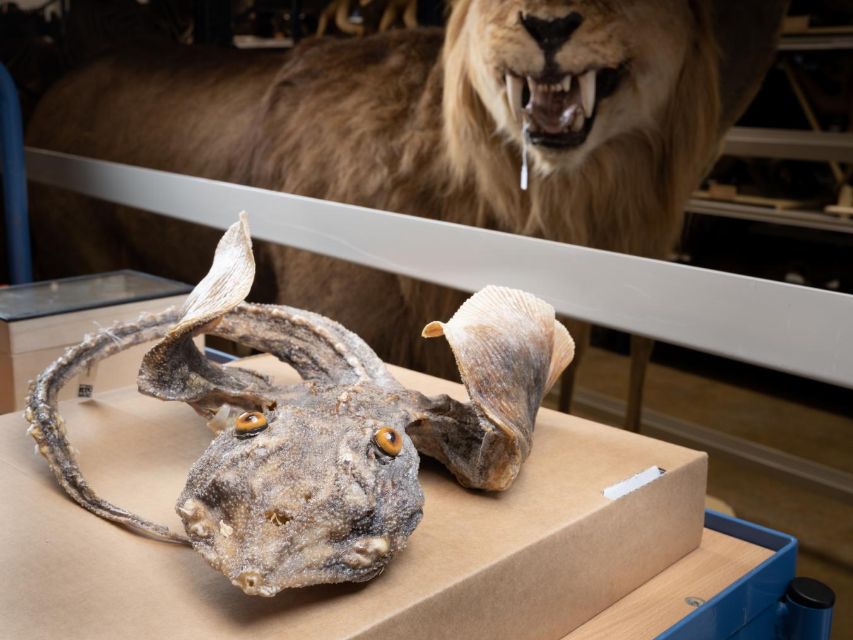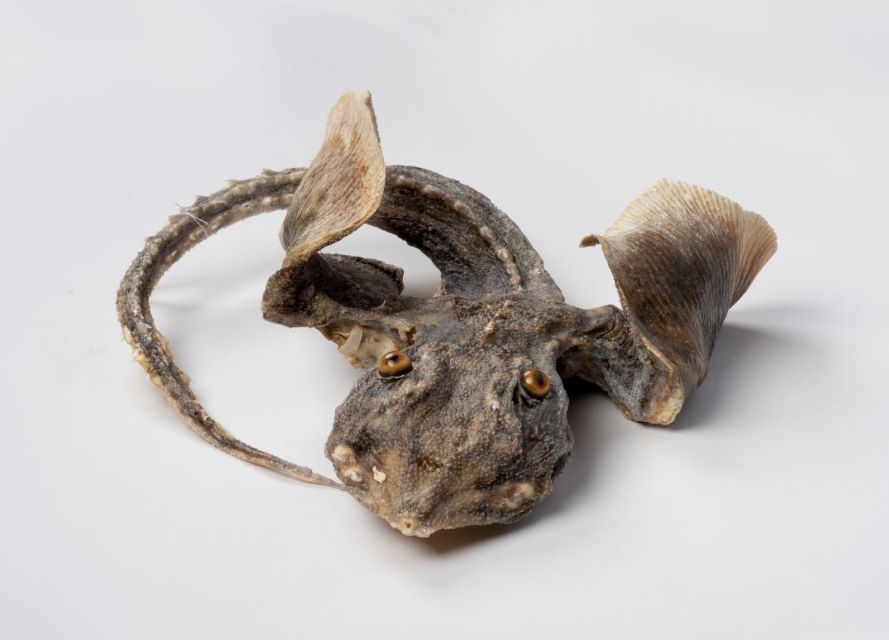DIY : How To Dry Your Dragon?
- Ray Dragon
In 2018, the ‘A New History of Fishes’ project of the University of Leiden fabricated a dragon based entirely on the instructions in Gessner’s text. He indicate that you should twist the body of the ray, remodel the head and the mouth, and cut off or re-cut other parts such as the top and bottom half of the wings. What remains of the wings should be propped up. Because Gessner included the end result, we also know what it should look like.
What Gessner doesn’t mention, however, is what to do next. In order to become a dragon such as that of Naturalis, the ray will also have to be dried and varnished. But how to dry your dragon? The first logical step would be to look at methods people used to dry fish for preservation at the time.
Fish spoils, but can be well-preserved in dried form for a very long time. Several drying methods were popular in the 16th century. Fish could be salted, smoked, or dried by hanging them out to dry in a cabinet outside, behind a screen to keep out the flies. In all these cases, though, the fish was cut into small pieces, or else they wouldn’t turn out dry enough. And indeed, a lot of dragons from the 16th and 17th century do appear to be quite small. A small dragon would dry out relatively quickly, and wouldn’t have to be cut up into pieces, as they did with the larger fishes.
Since nowadays it’s nearly impossible to get a small ray like that – they’re thrown back into the water as unwanted by-catch – the reproduction of Gessner’s dragon is made out of a ray of about 4.5 lbs. Such a big animal is much harder to dry, and it was eventually decided the dragon would be mummified. Mummification is a process that uses natron. Natron is a kind of salt that naturally occurs in salt lakes in Egypt, and was used by the ancient Egyptians to mummify their dead. Of course it’s very hard to acquire here, but very easy to imitate. Natron consists of sodium hydrogen carbonate, sodium carbonate with a bit of sodium chloride and sodium sulfate. These ingredients can be mixed in the right amounts by combining one part sea salt, with two parts baking soda and two parts cleaning soda. So you can make your own dragon just by using simple household ingredients. But be careful, wear gloves and make sure not to get natron in your eyes.
Our version of Gessner’s dragon has been in a natron container for six weeks. About once a week, the natron was refreshed. Our ray was so big it couldn’t fit into our container with its tail out, so we had to curl it around the body. After six weeks, we dried the last remaining wet patches using a blow-dryer. Then, we varnished the dragon and provided it with glass eyes and. The result is pretty scary!
Apart from the methods mentioned here, there are several other ways to preserve animals. Natron is a relatively safe method, but there were lots of methods used for this purpose that were way less innocent.

Naturalis_DSF0040.jpg

Draakje door Sophia Hendrikx en Robbert Striekwold - Naturalis Biodiversity Center - Photography Cees de Jonge
 - Photography Cees de Jonge](https://micrio.thingsthattalk.net/pzLRw/views/max/860x640.s.jpg)
Conrad Gessner, Historia Piscium, 1558 Rare Fish Books Amsterdam - Photography Cees de Jonge